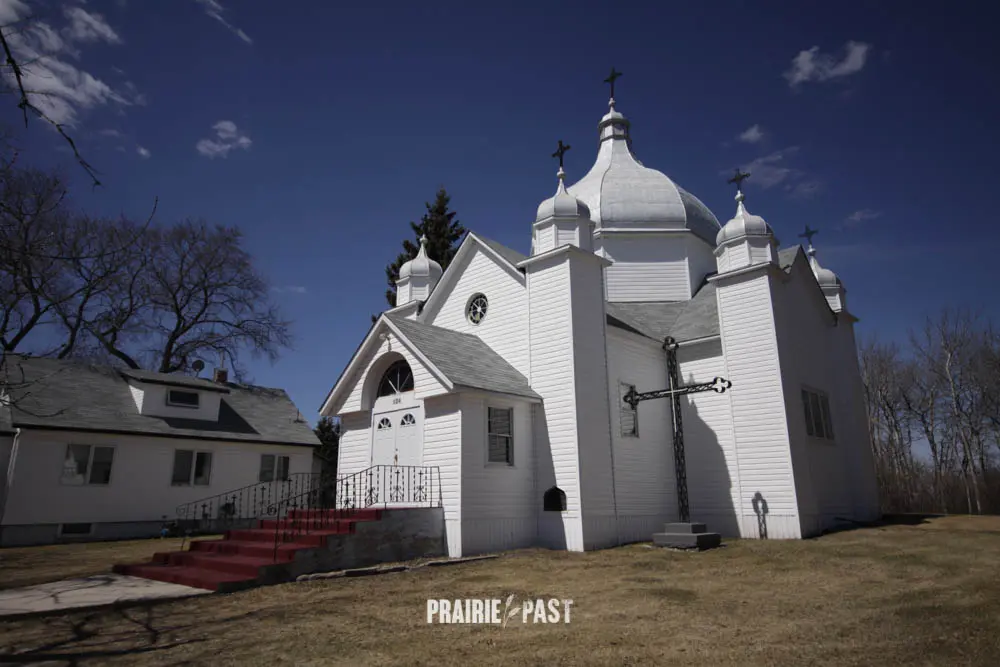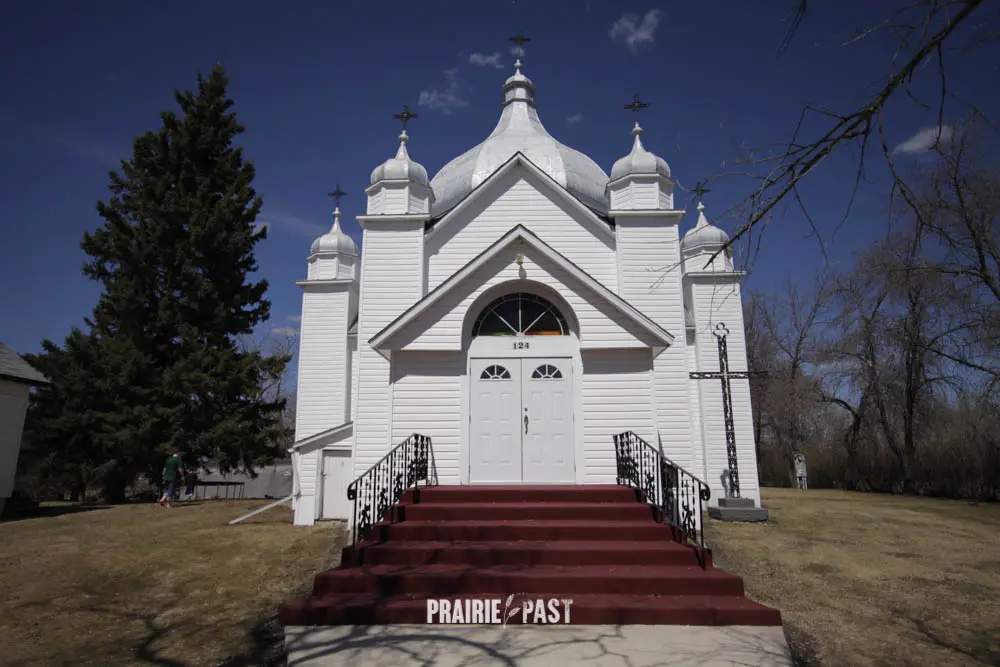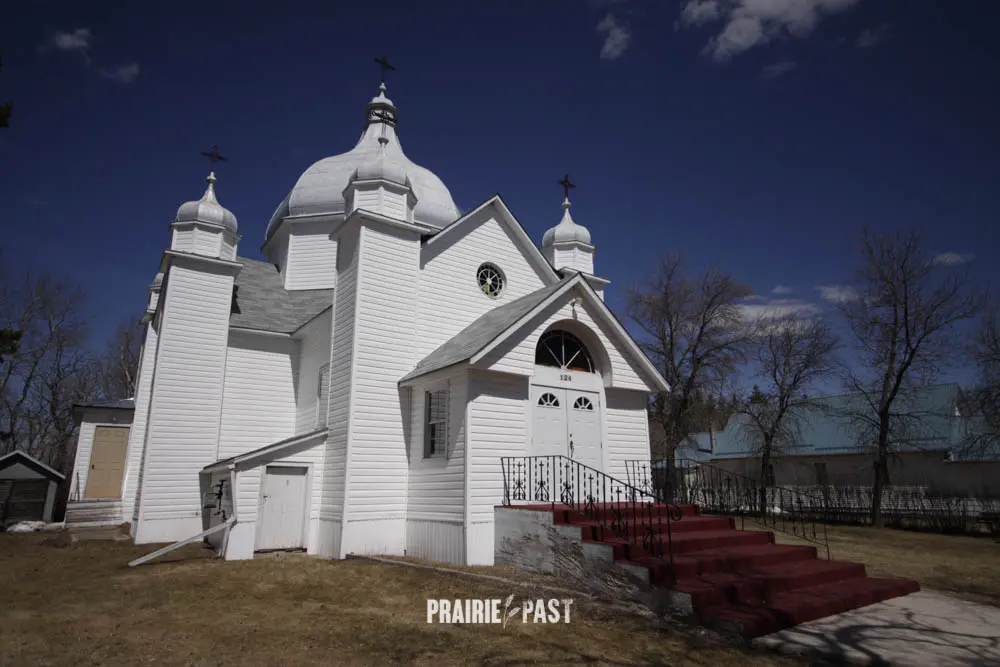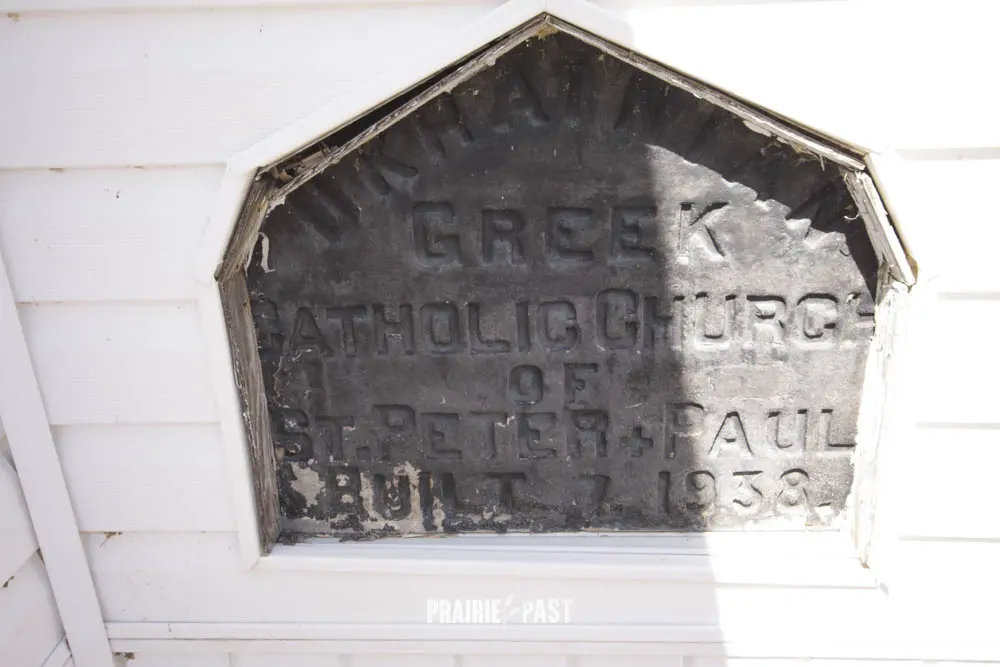The first church in the Rama district was built in 1928 on a one-and-a-half-acre hilly site in the northern part of the community. This rectangular structure served the parish for several years before being remodeled into a parish hall in 1936, when a second, more substantial church was constructed nearby. Both of these early churches were built through the dedication of the parishioners, relying on private donations and volunteer labor.
The current church built in 1938 is a wood-constructed cruciform building, notable for its large central dome and six smaller cupolas crowning the front and side towers. Its gable roof is finished with asphalt shingles, while the domes are covered in white sheet metal. The exterior walls are clad in painted wood siding. Oriented north to south, the church features a slightly elevated and curved sanctuary at the north end, flanked by sacristies, with the choir loft located at the south. Inside, the vaulted ceiling and central dome—supported by four pilasters. Two small side altars, dedicated to the Holy Mother of God and Christ the Redeemer, are set into the walls. The church includes wooden pews for about 120 parishioners and is equipped with electricity and central heating.
On the church grounds are several notable features: a mission cross commemorating the Holy Mission, a wooden belfry built in 1950, a rectory, and a parish hall. Ukrainian settlement in the Rama area began in 1912, and the early settlers were originally affiliated with the parish in Dobrowody. Before their church was built, religious services were held in private homes. Until 1939, priests from Canora served the parish, after which a permanent pastor was assigned, marking the growth and stability of the local faith community.



